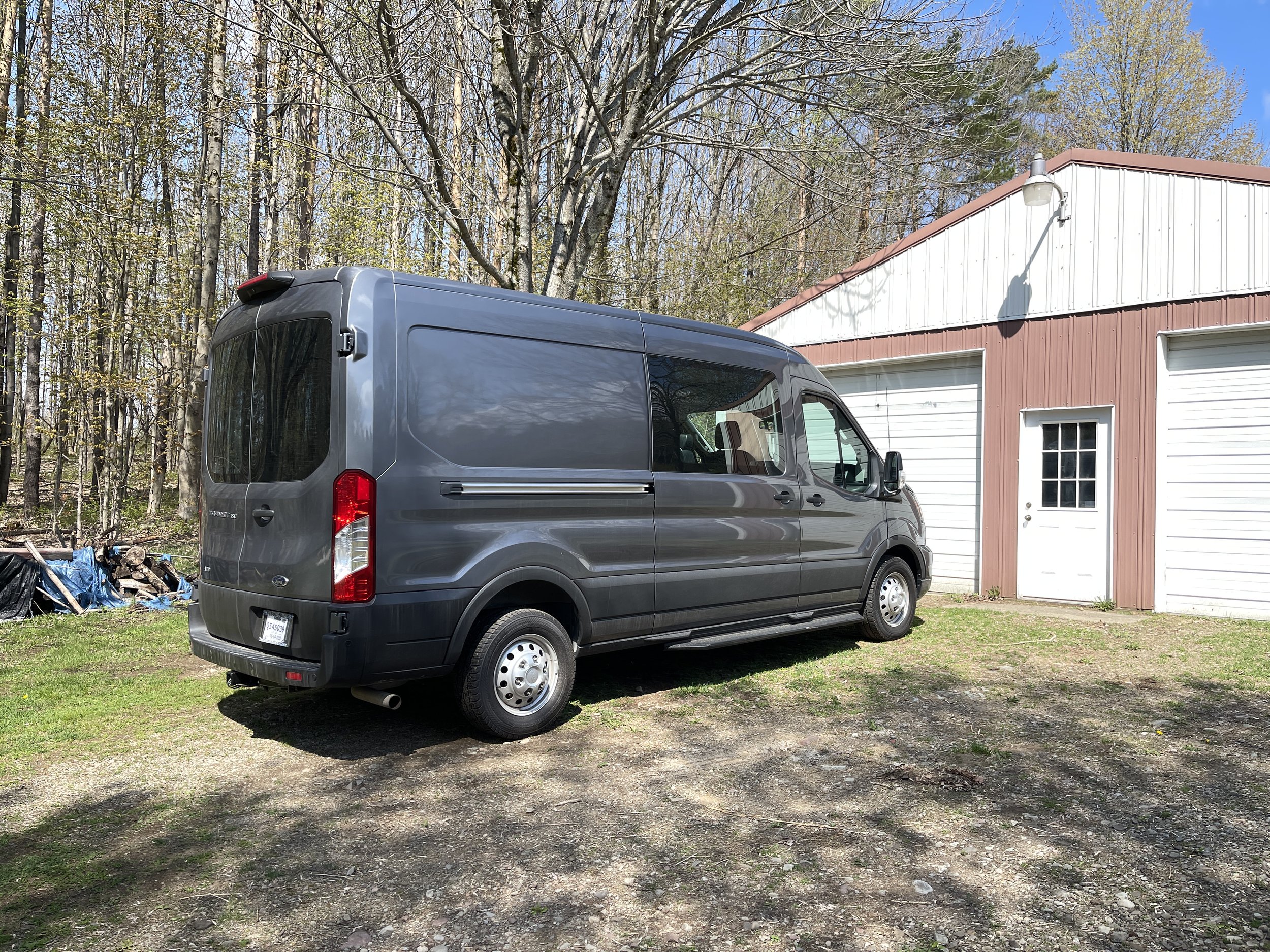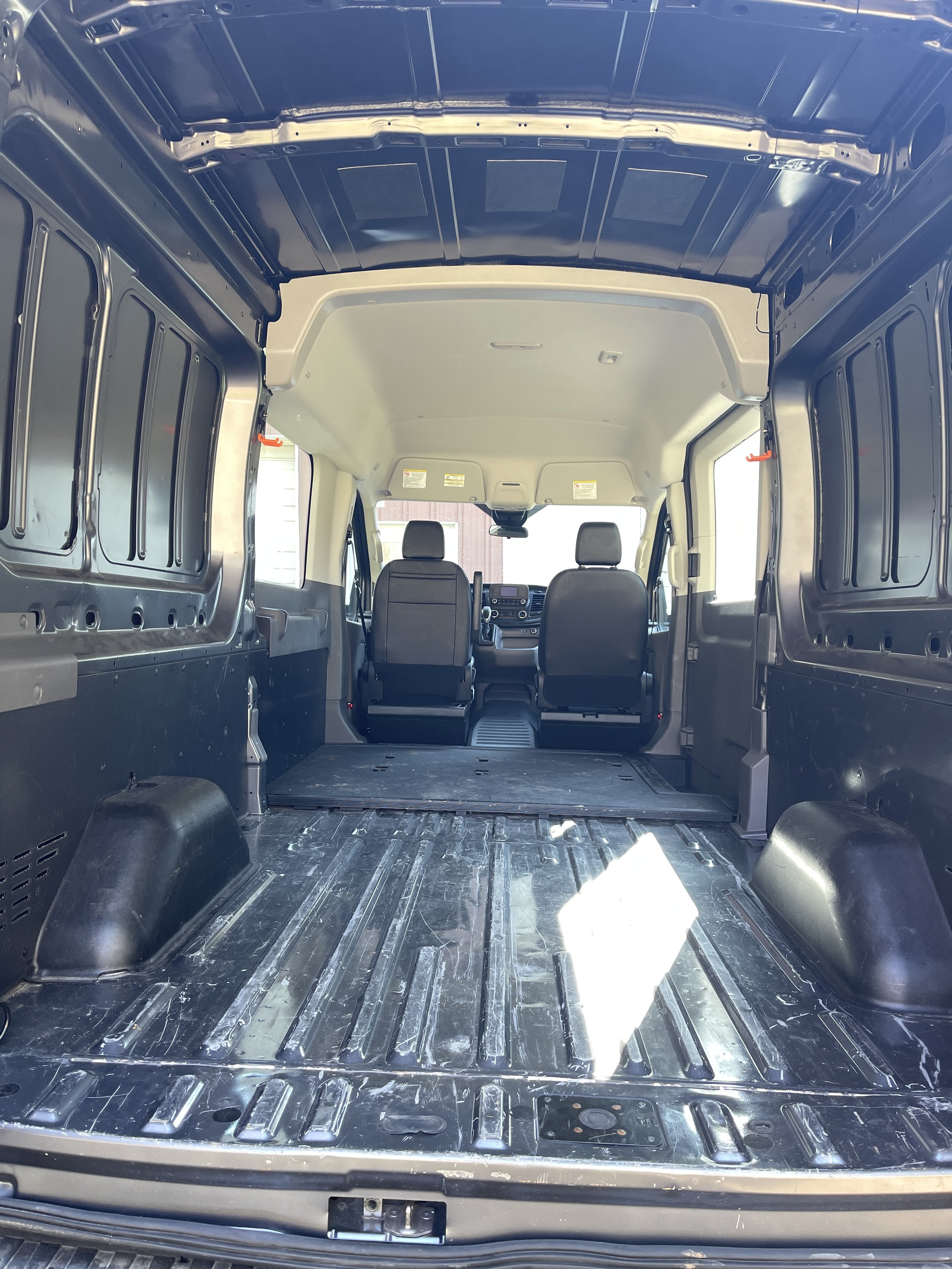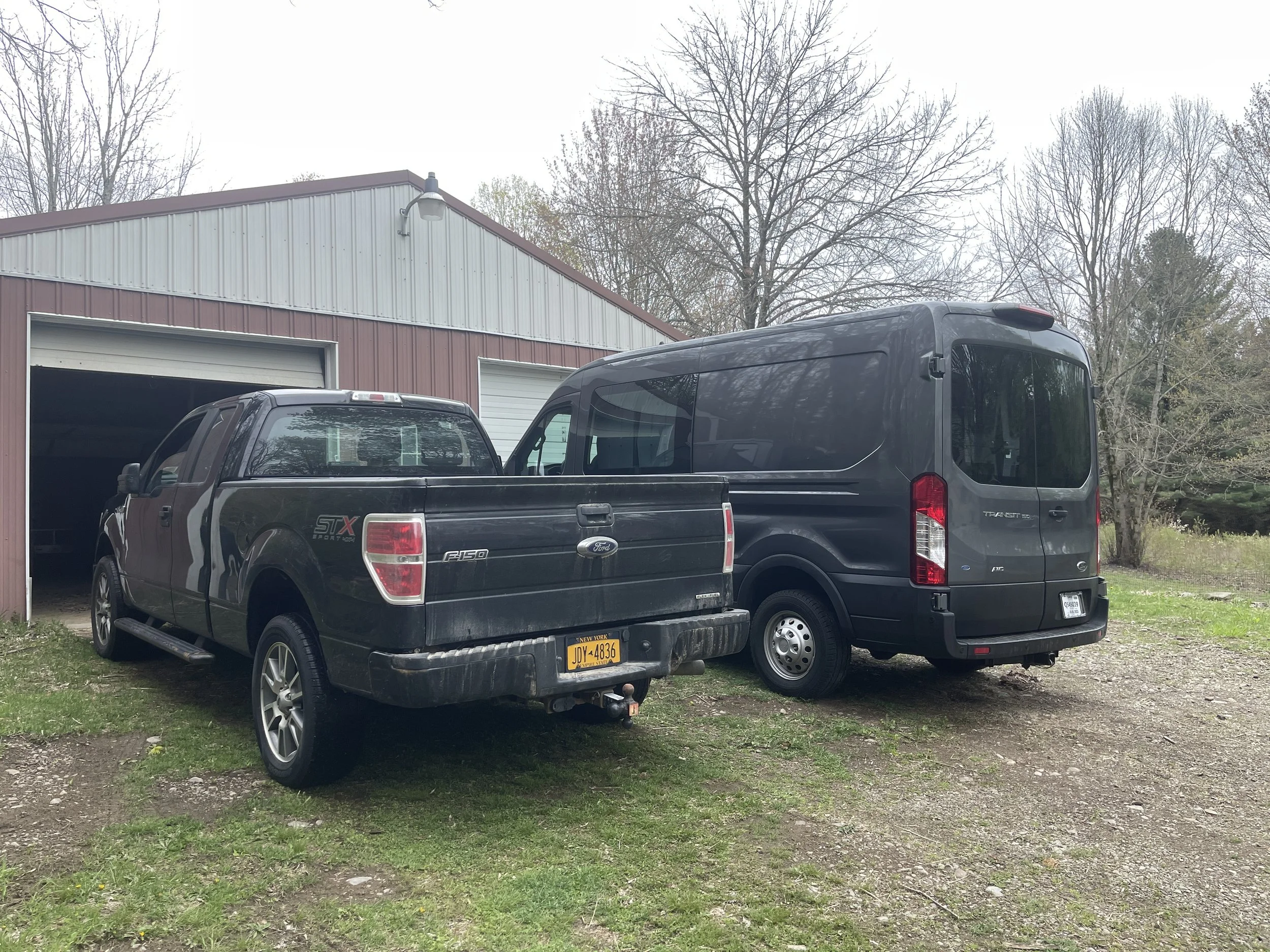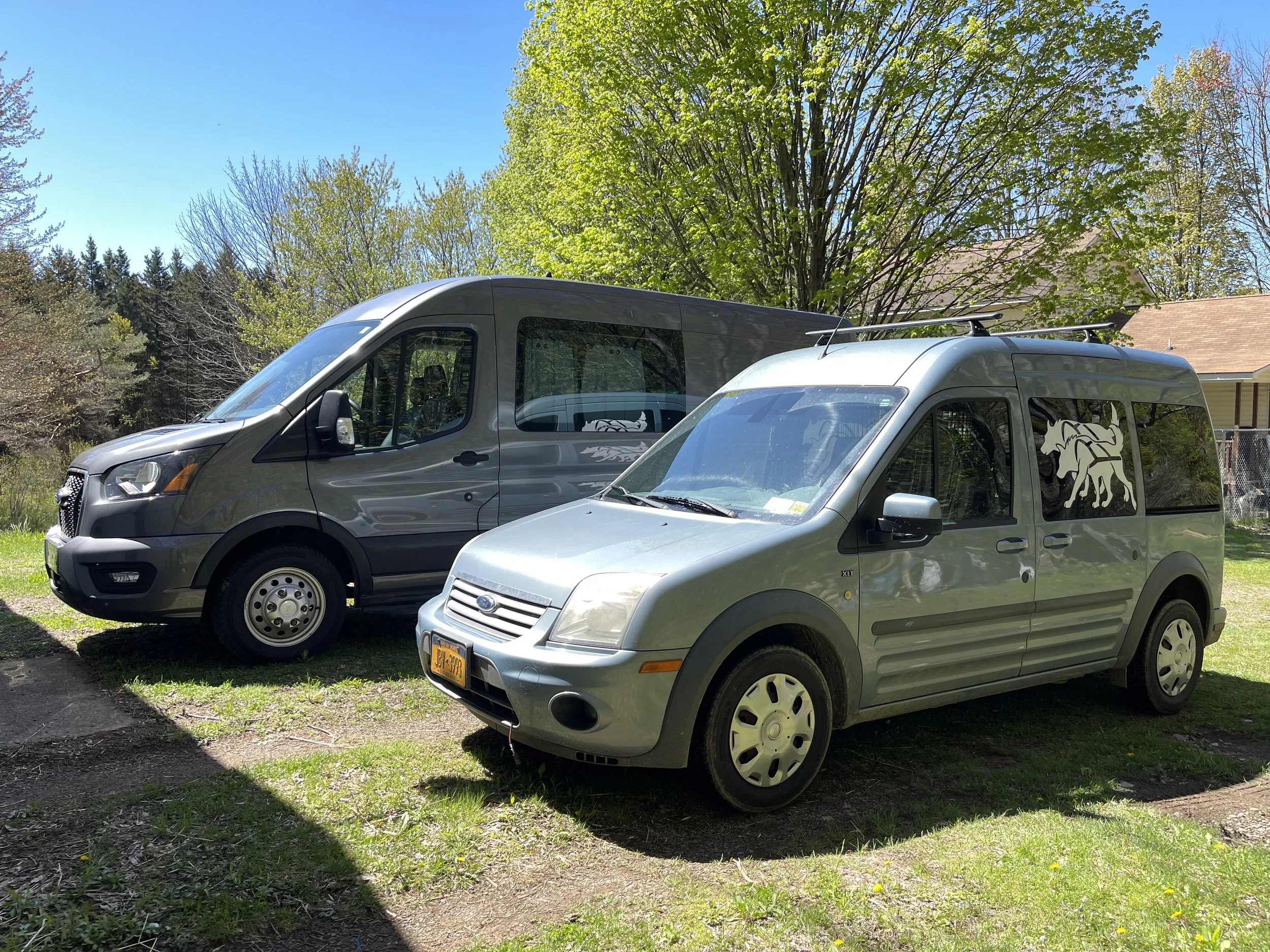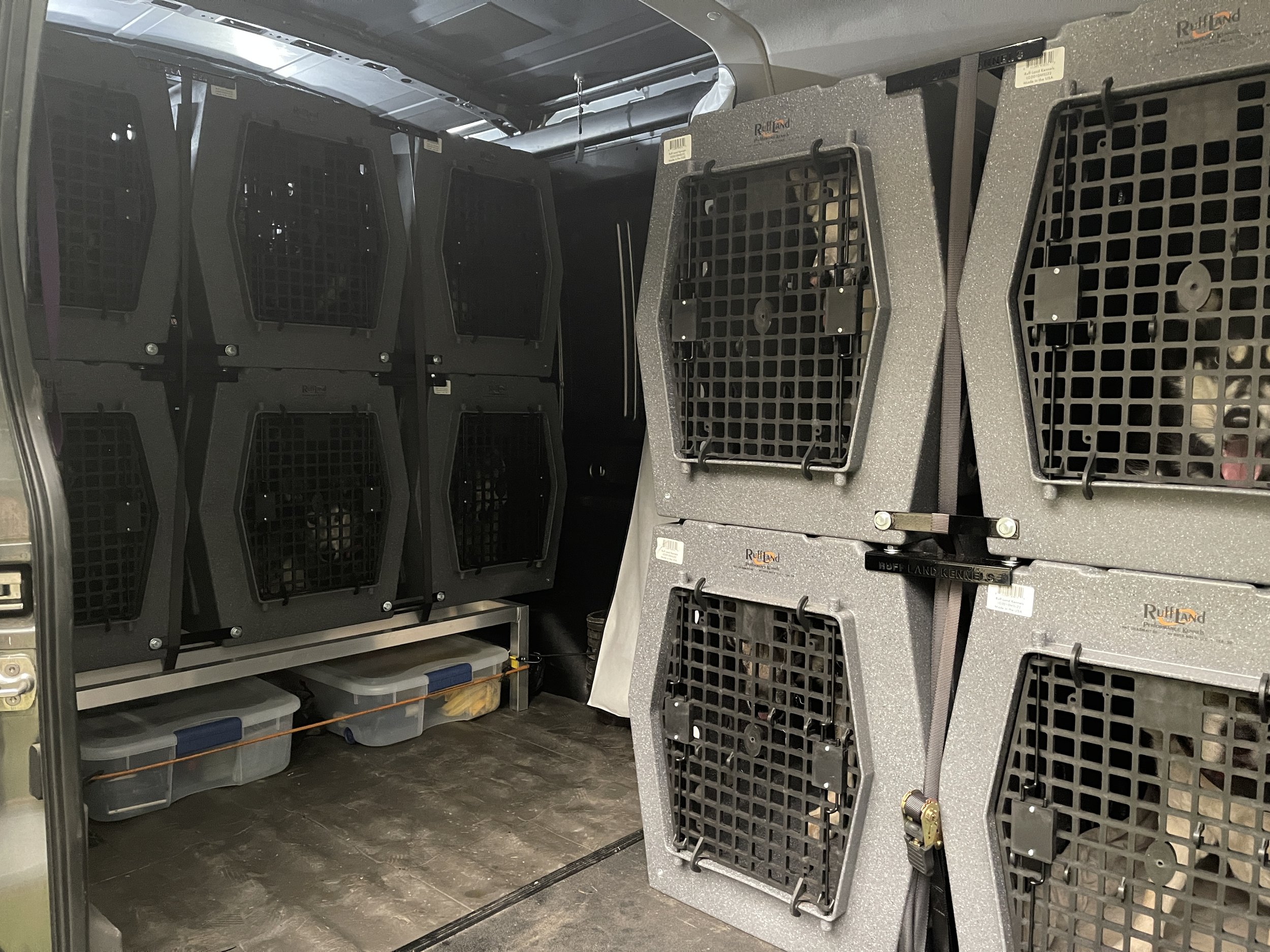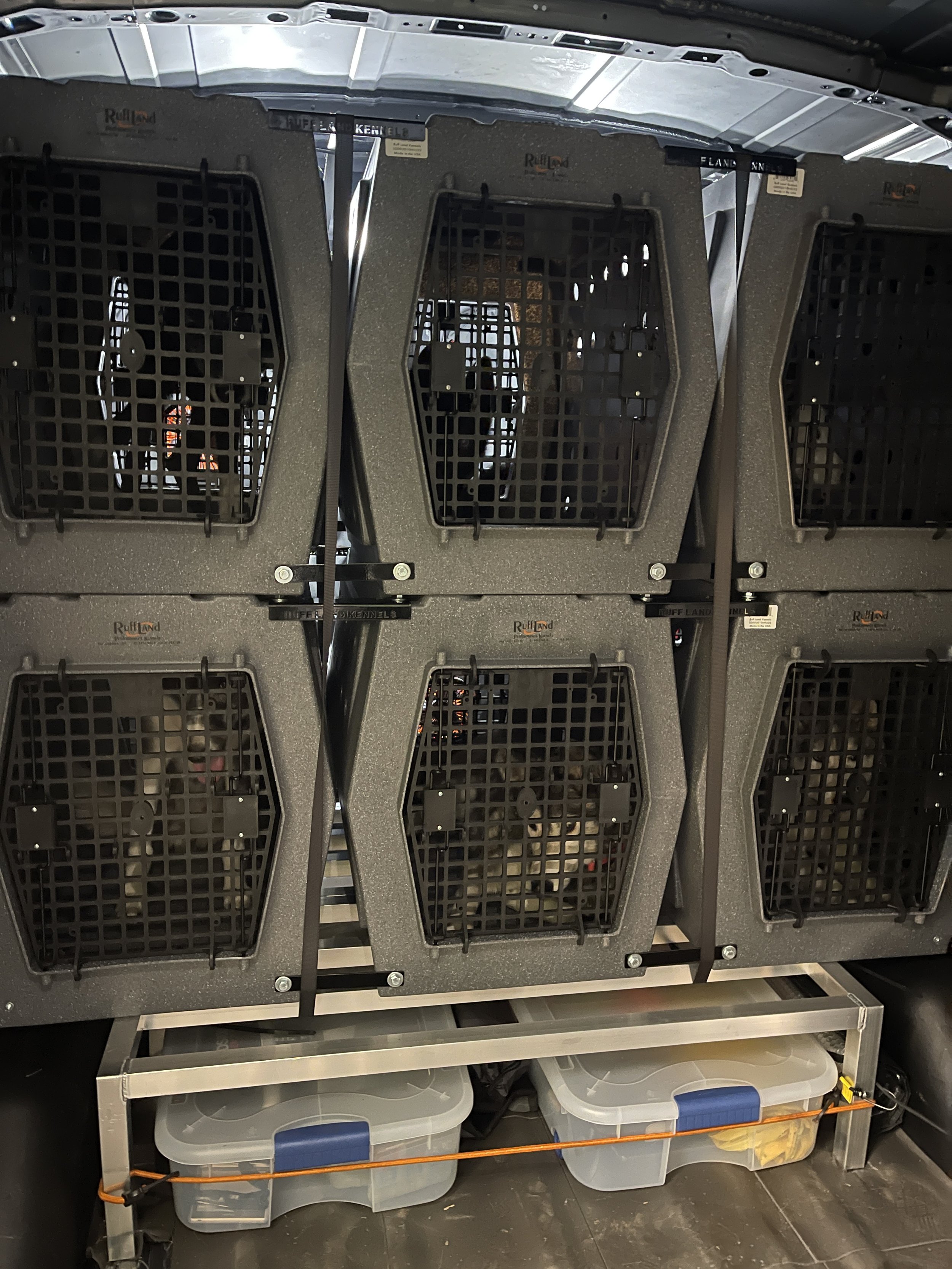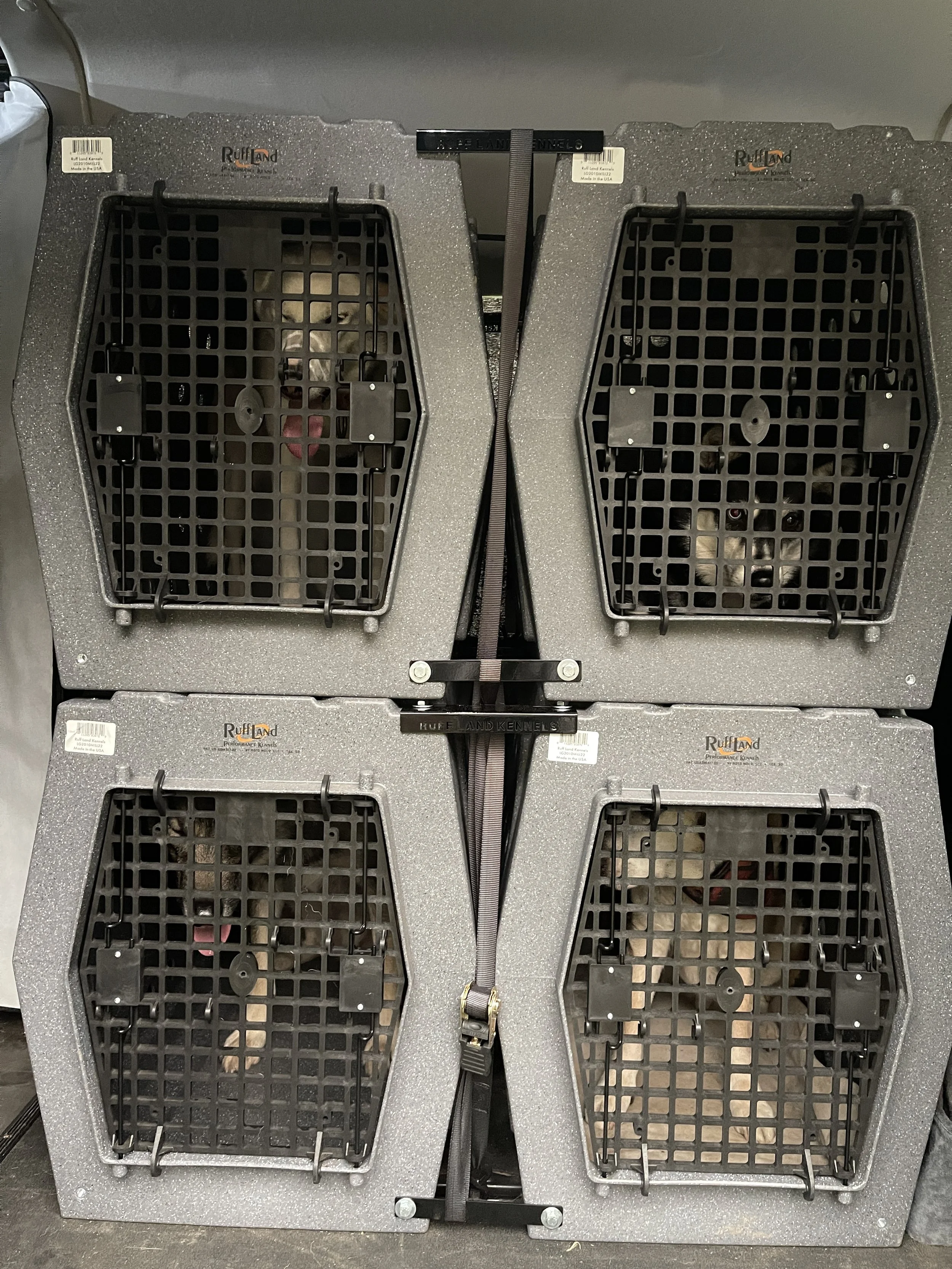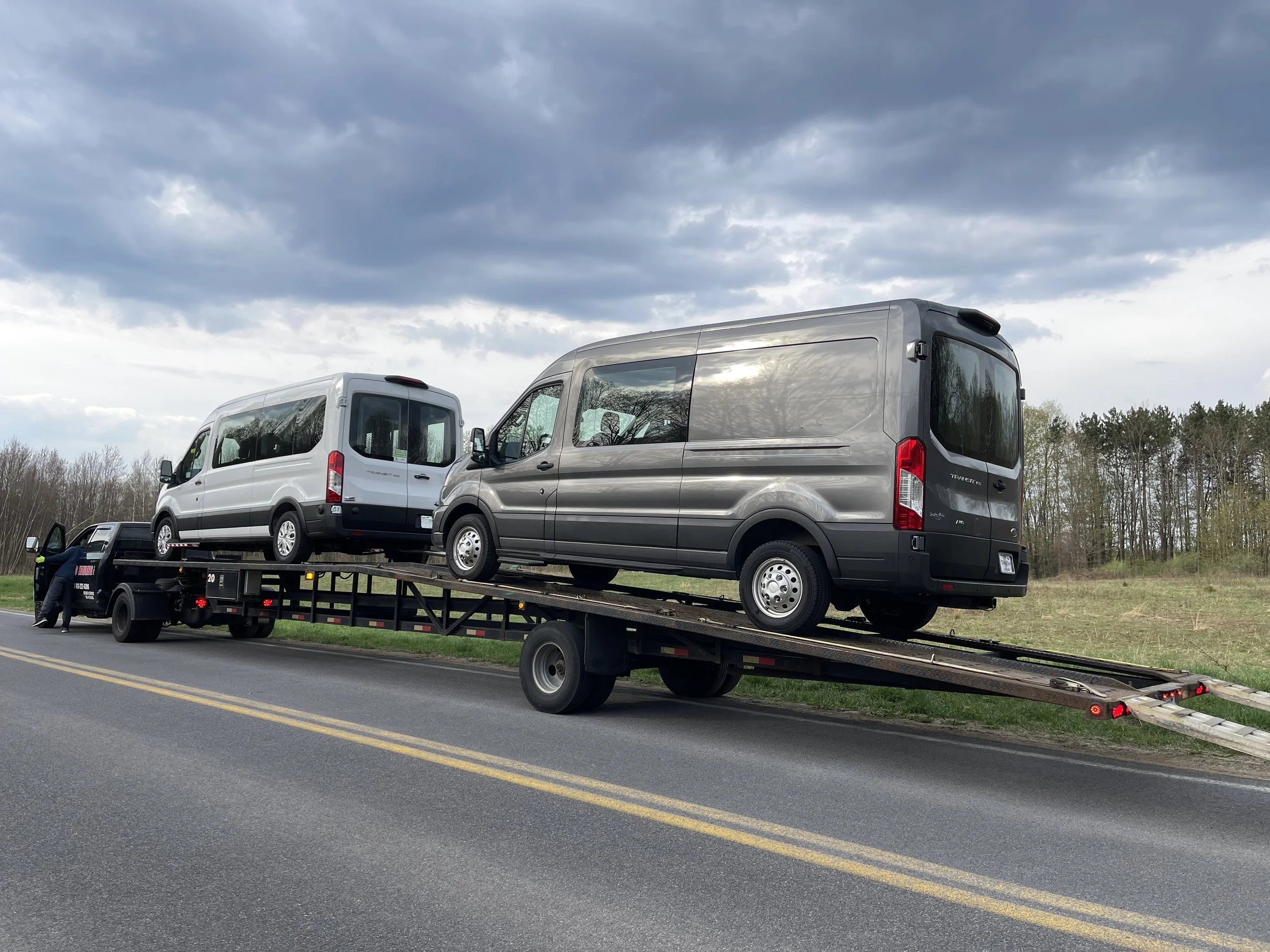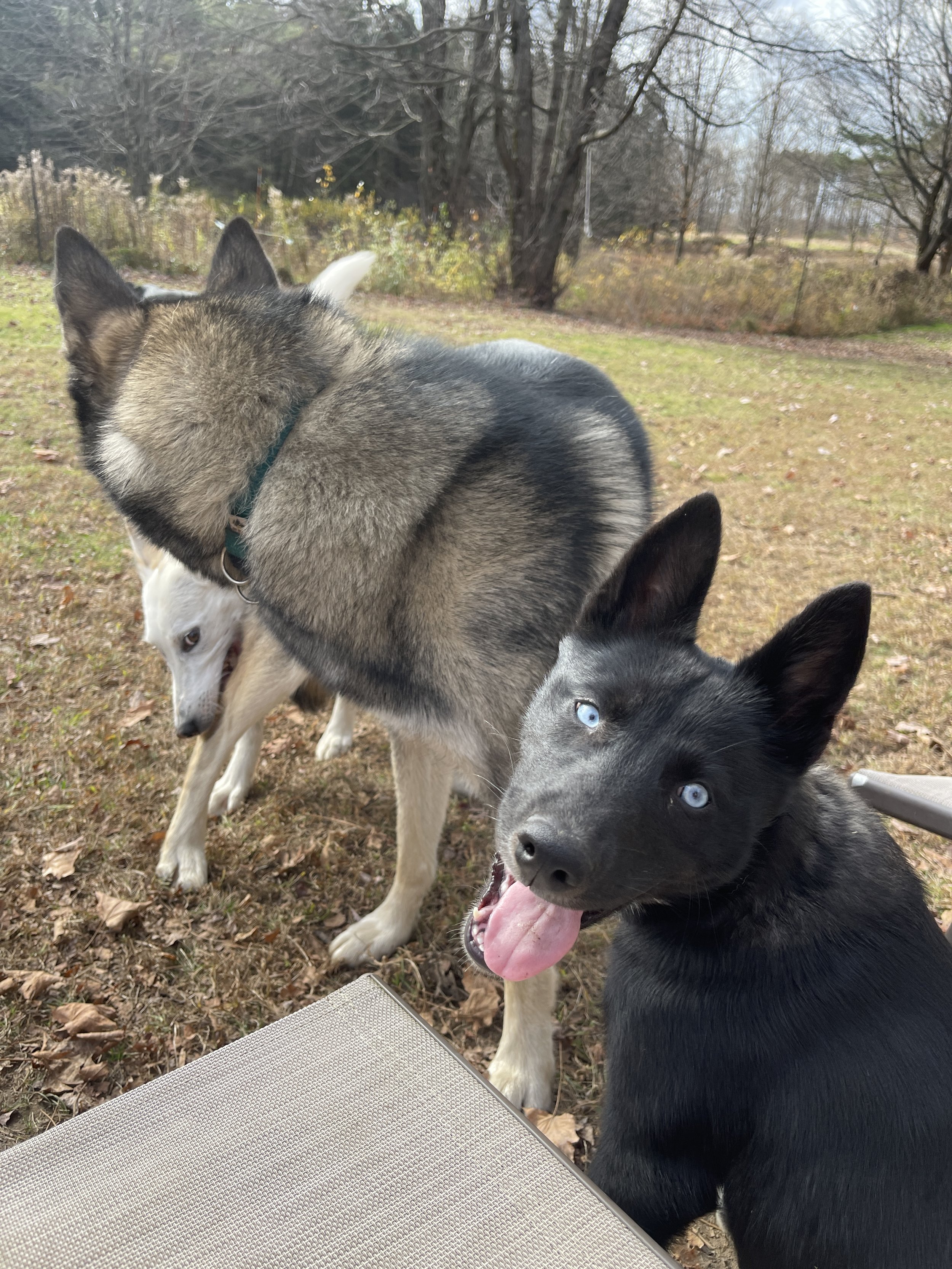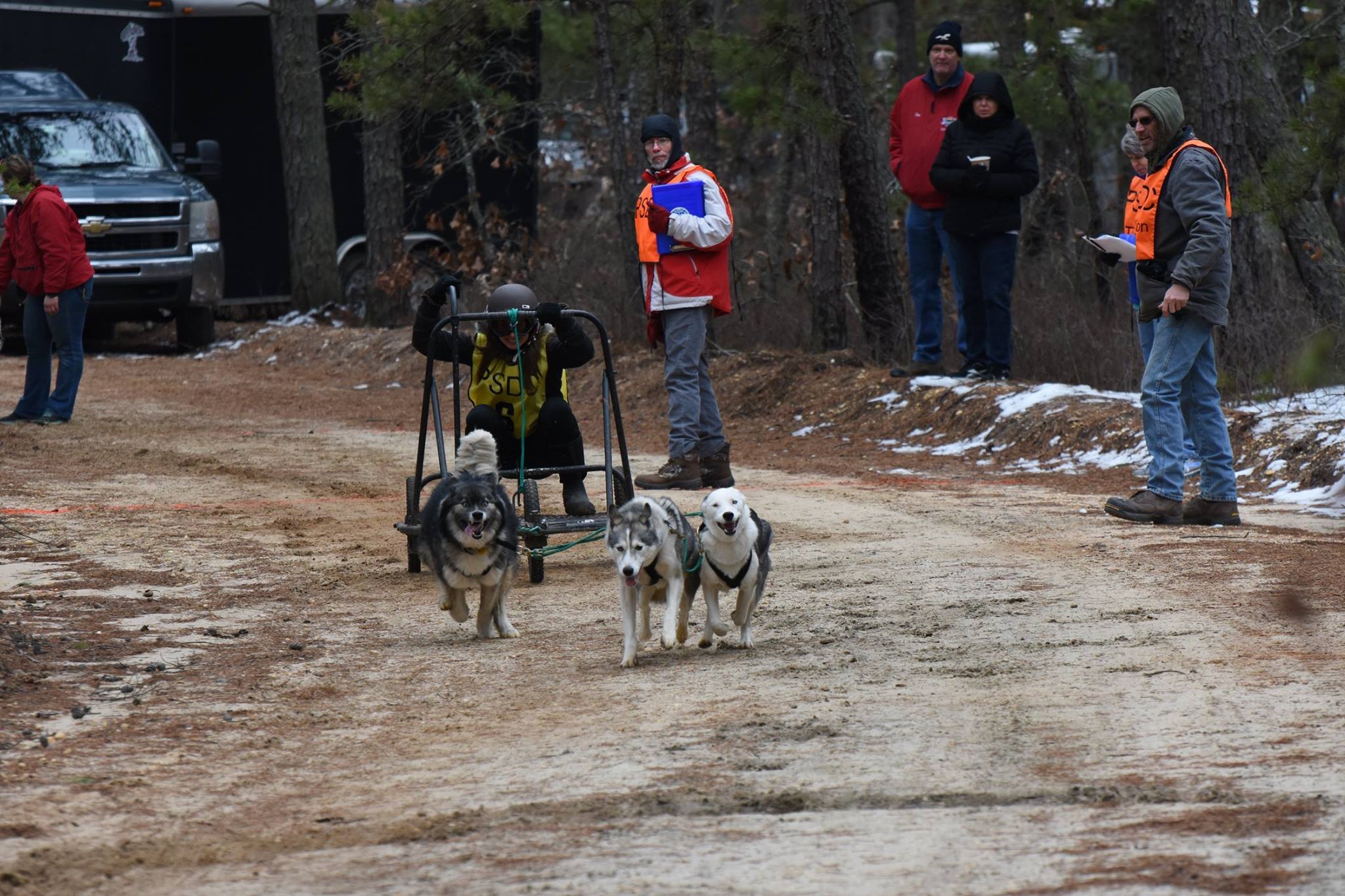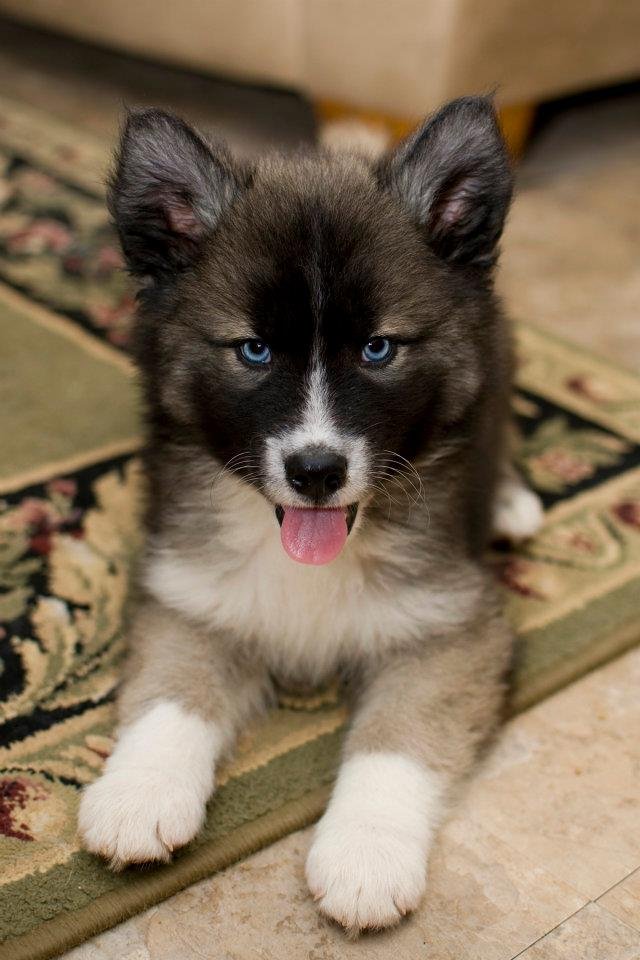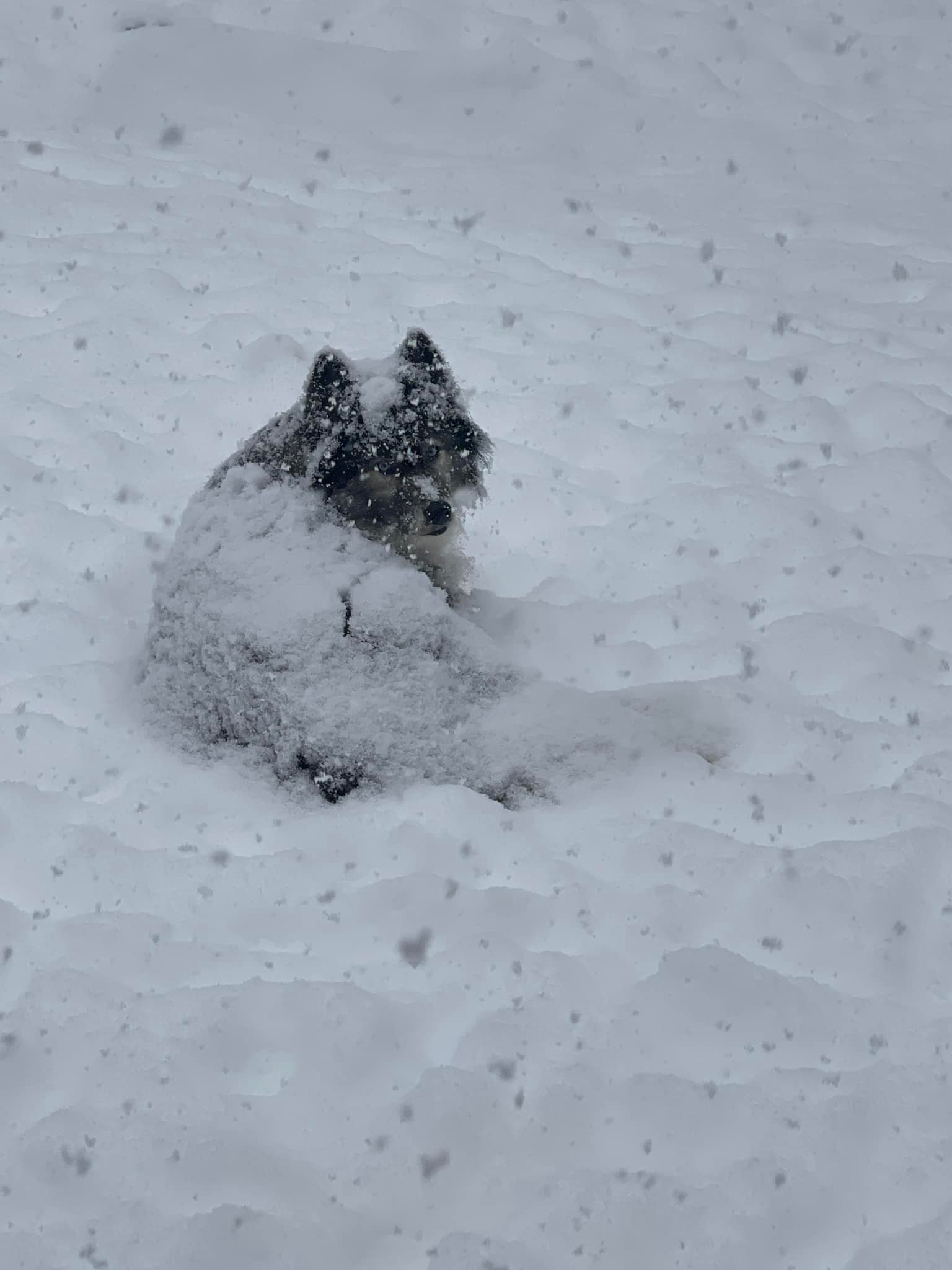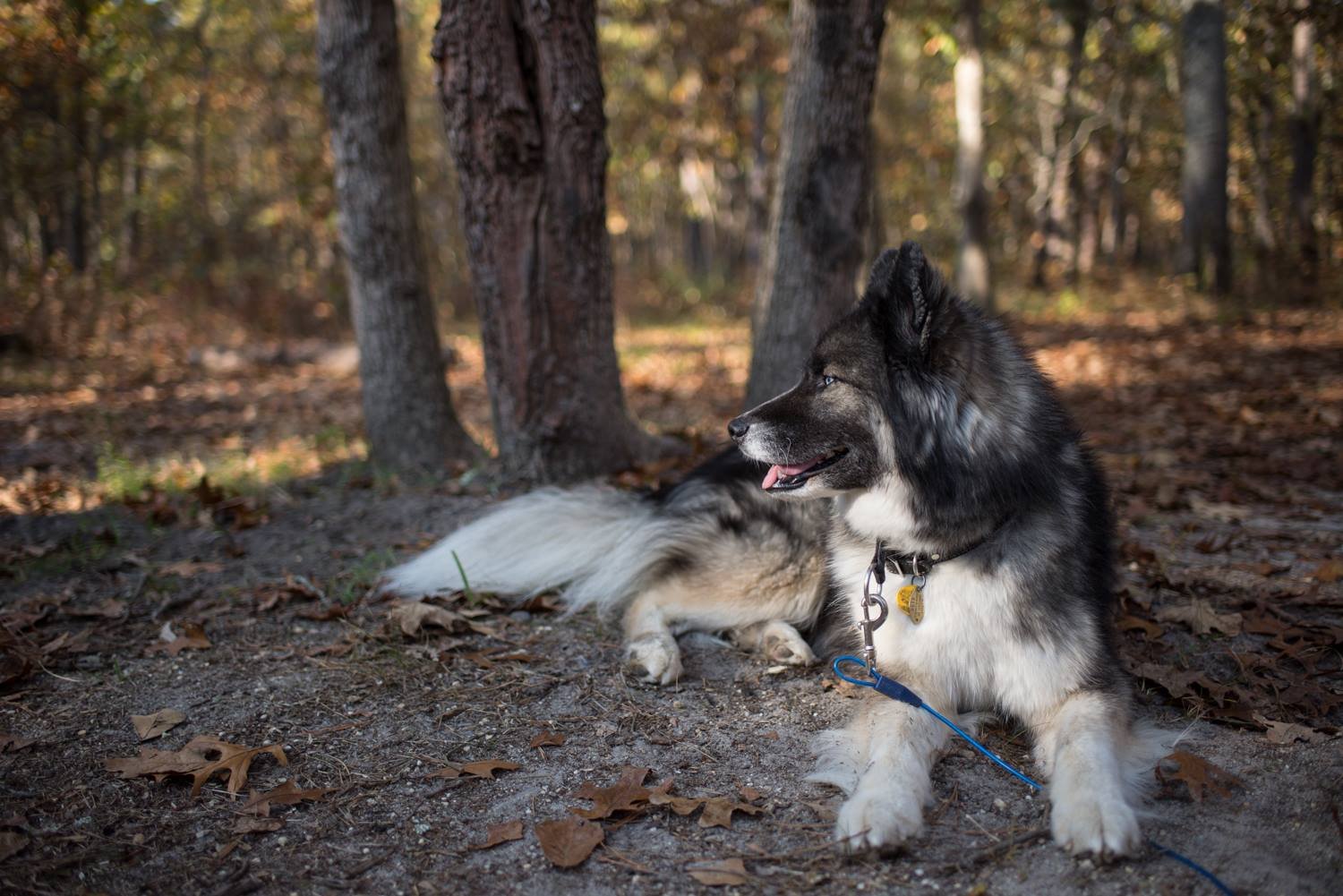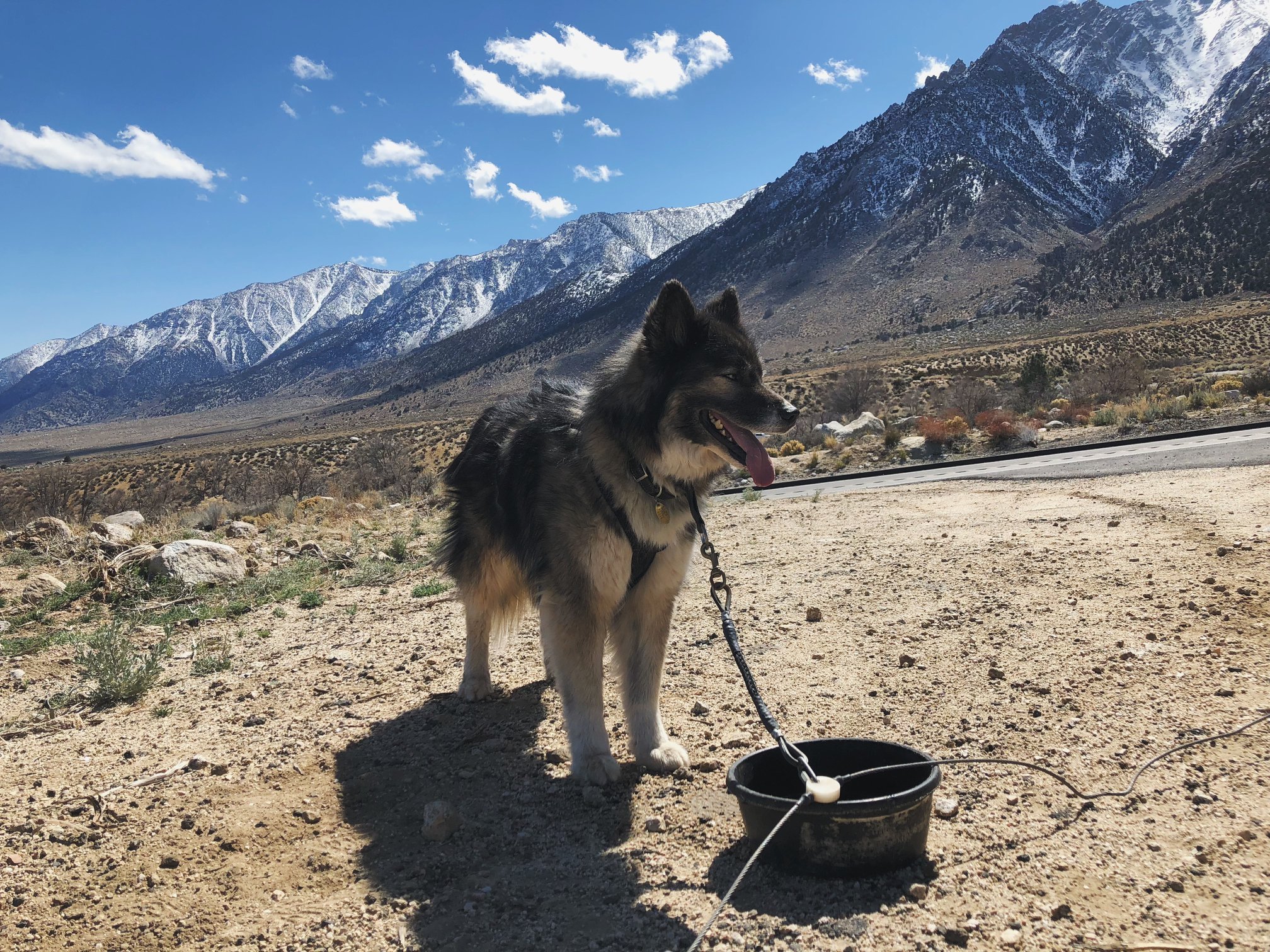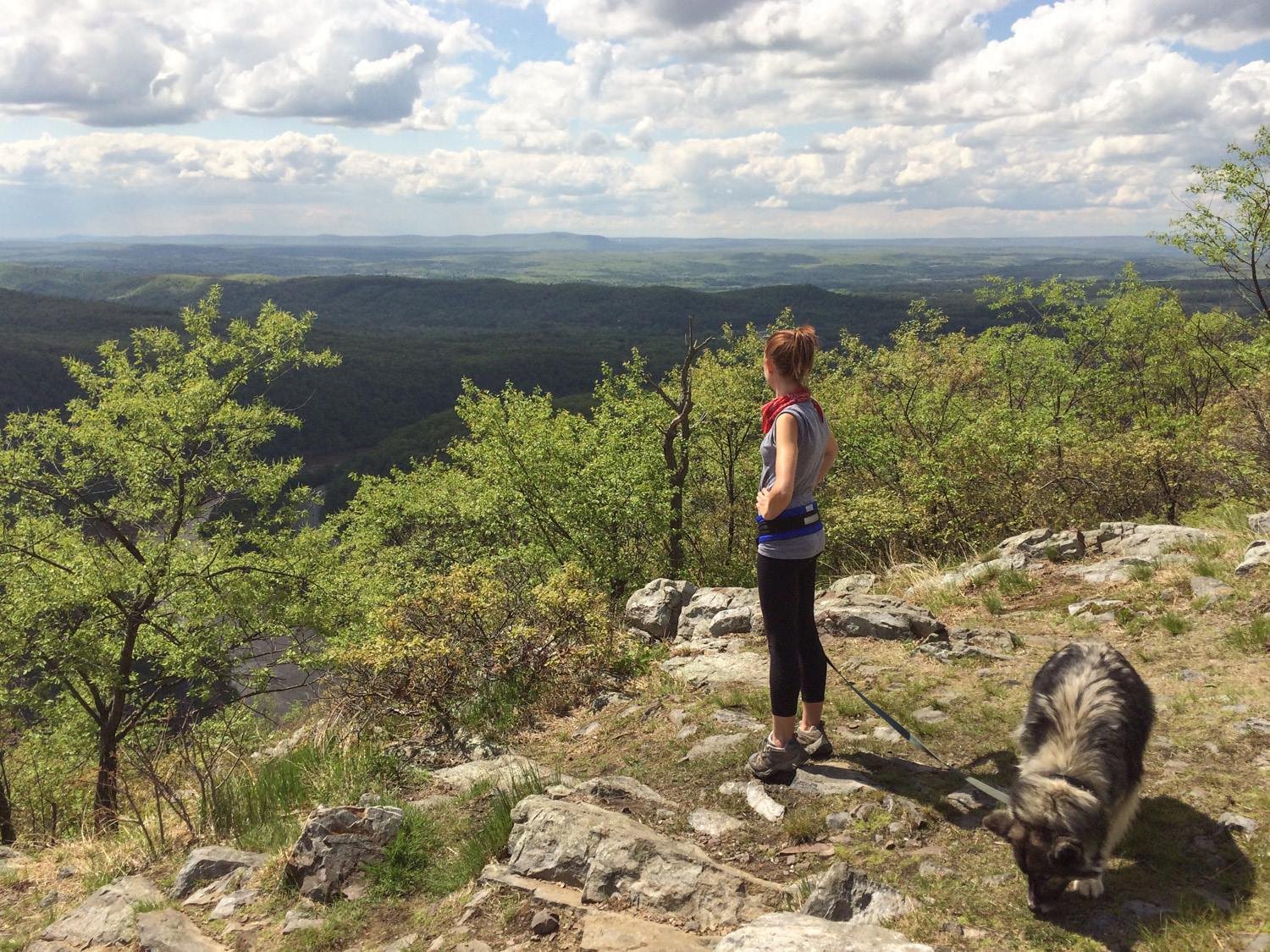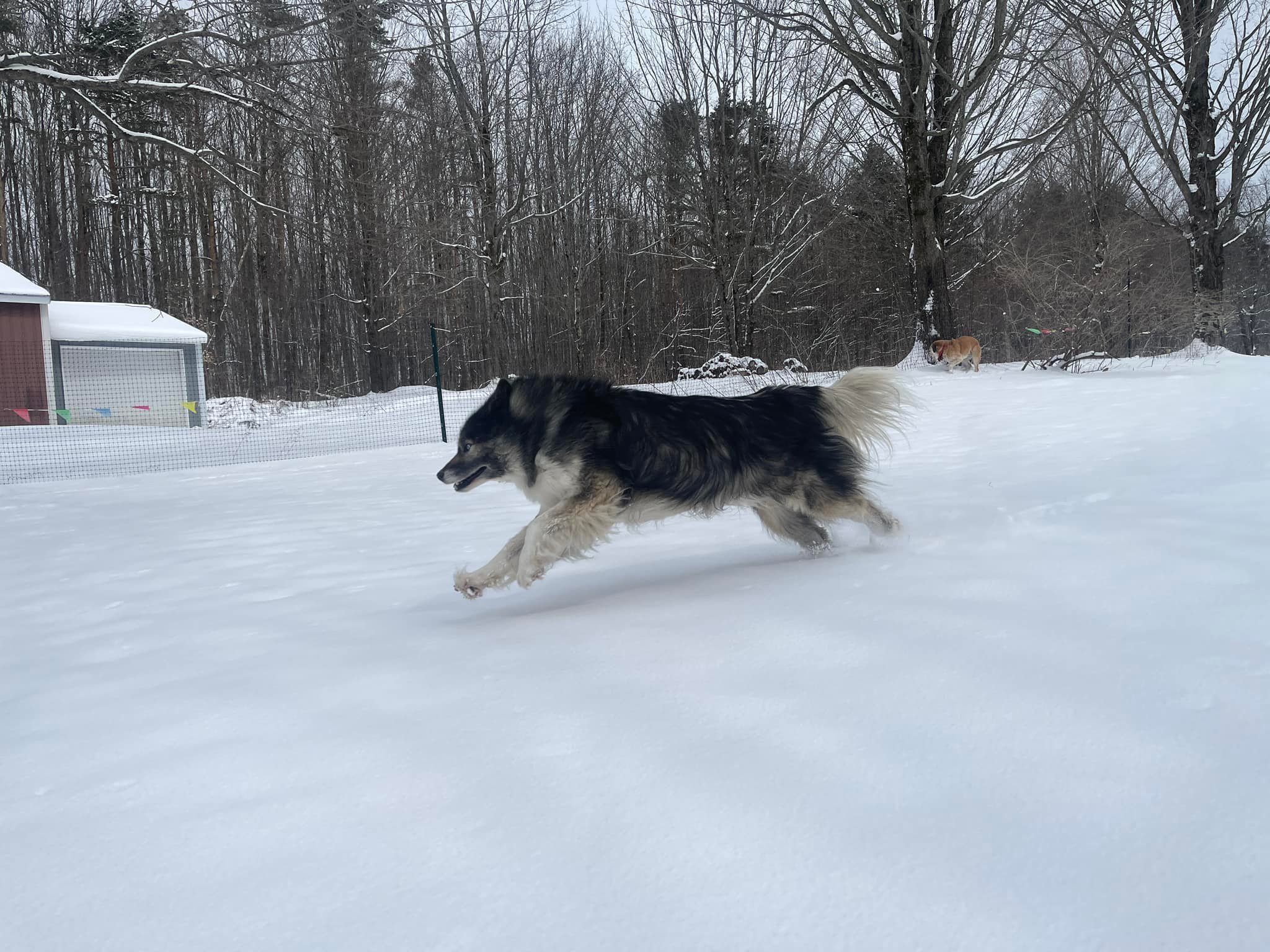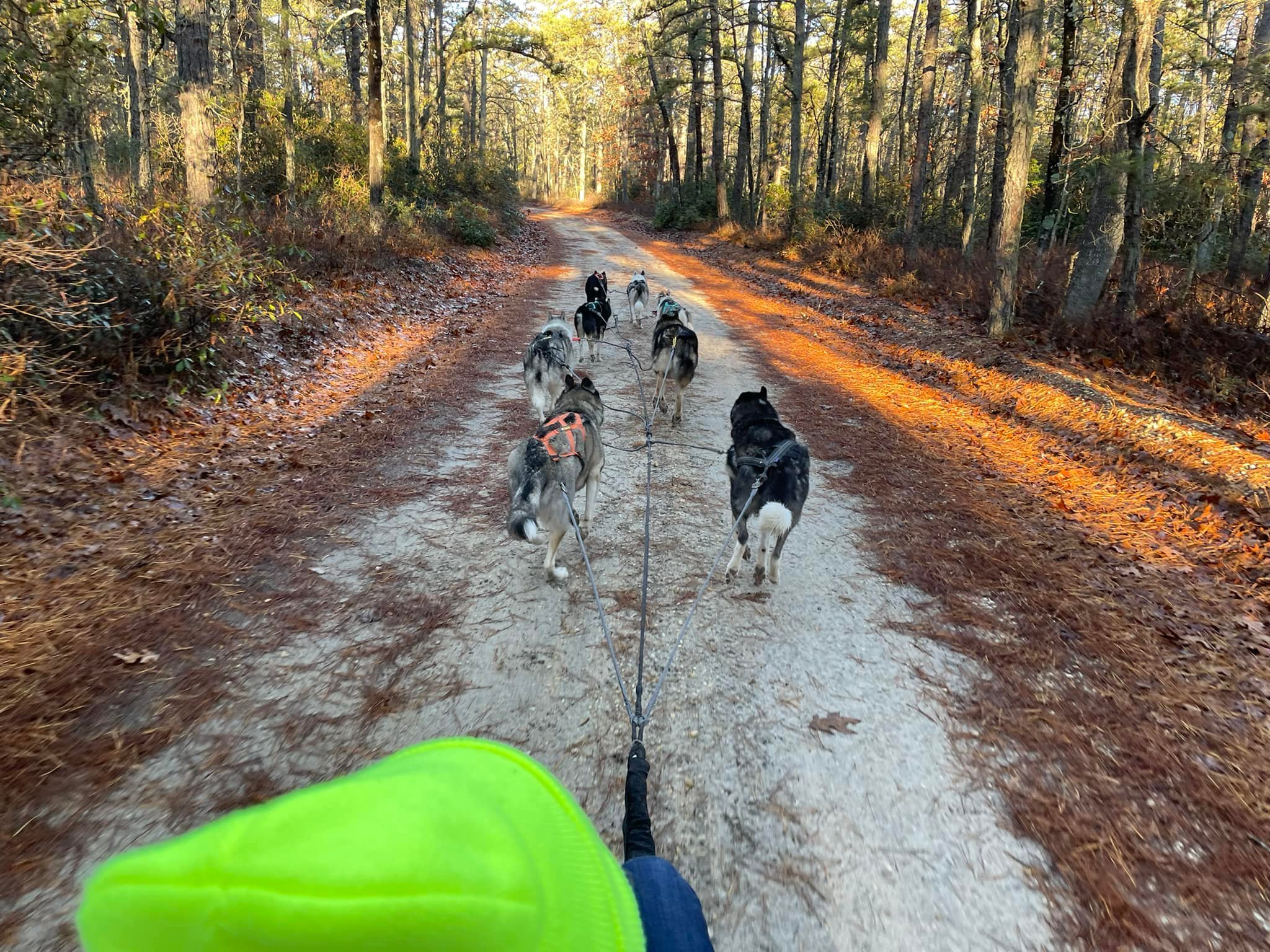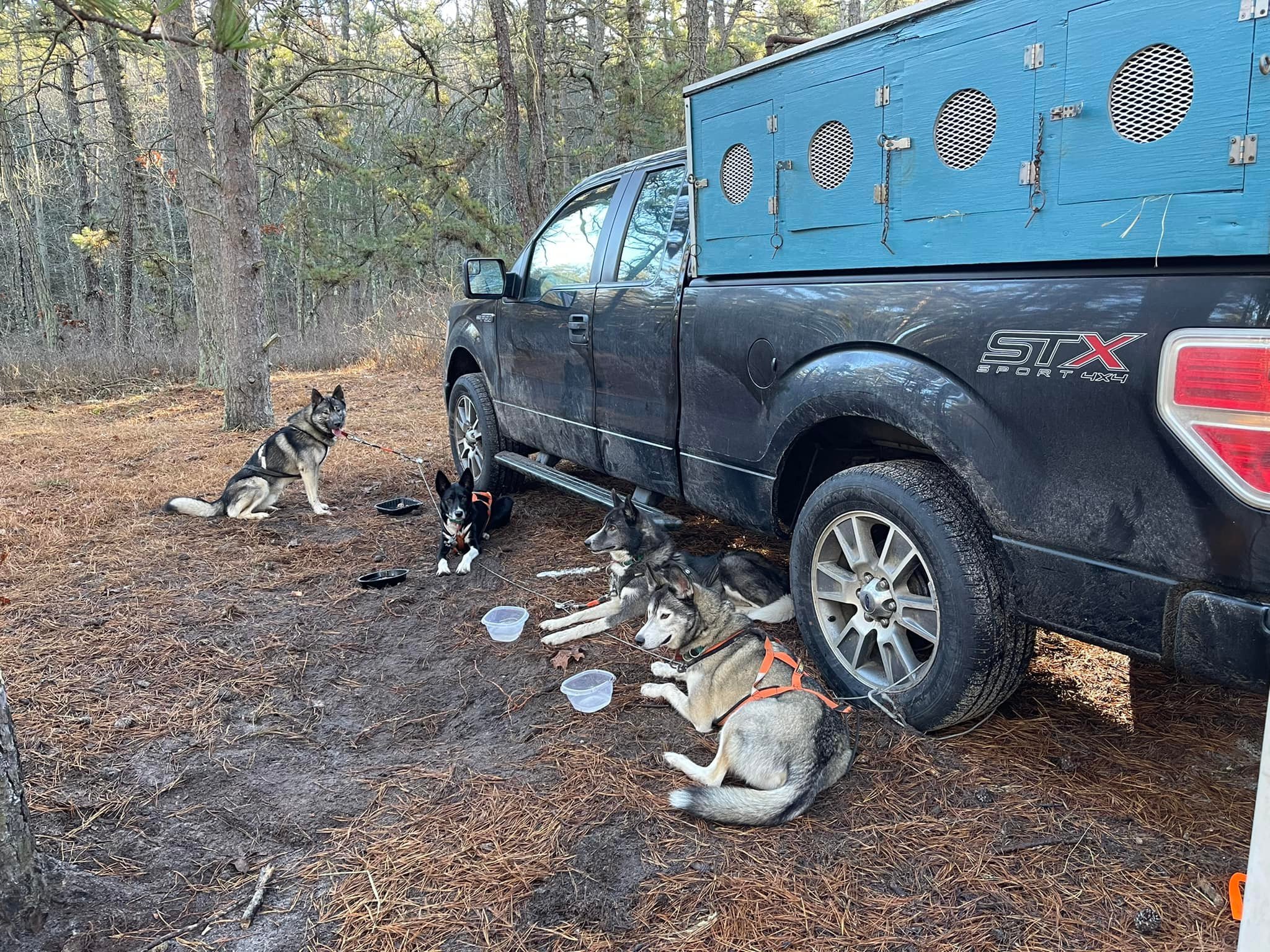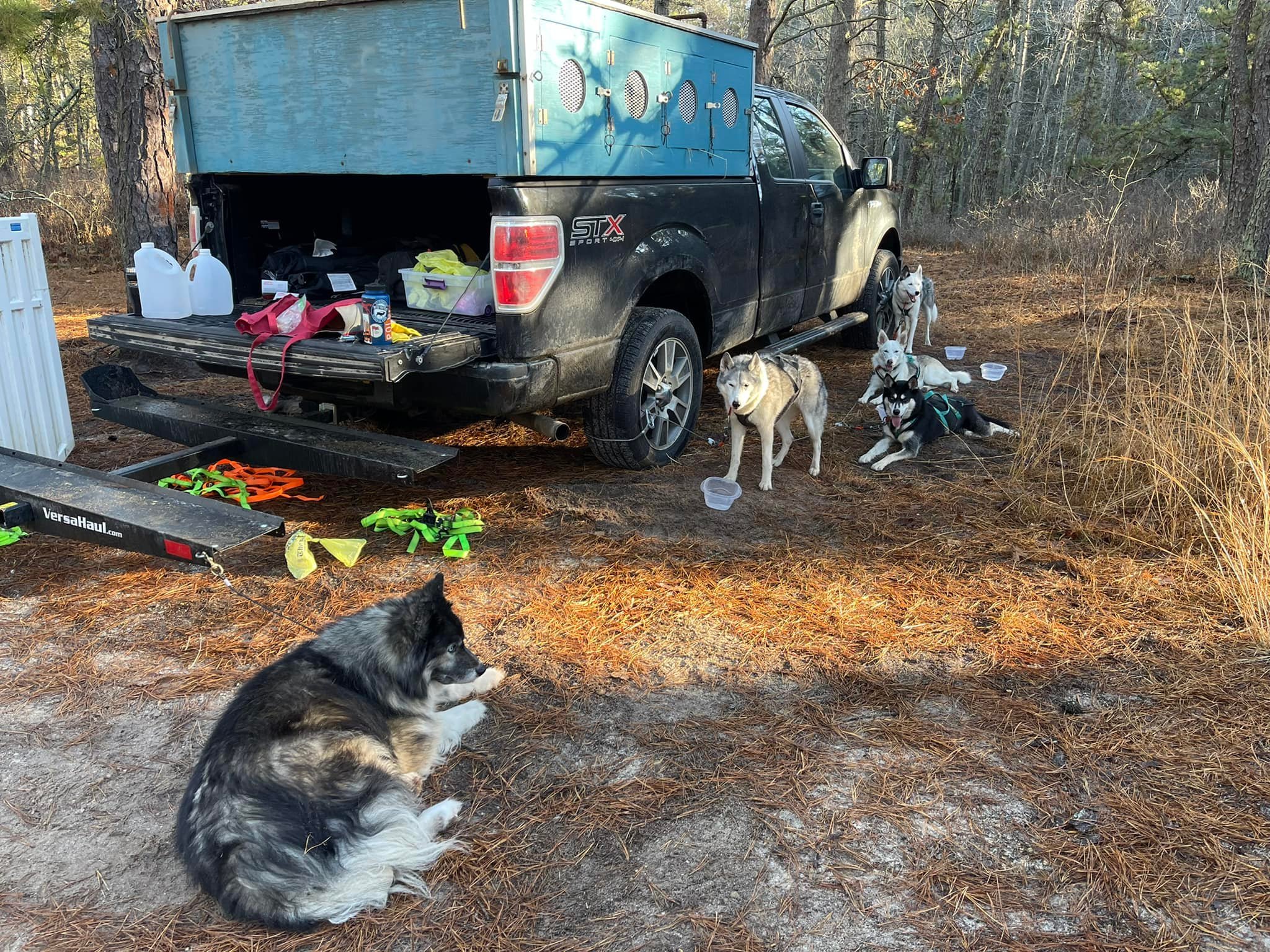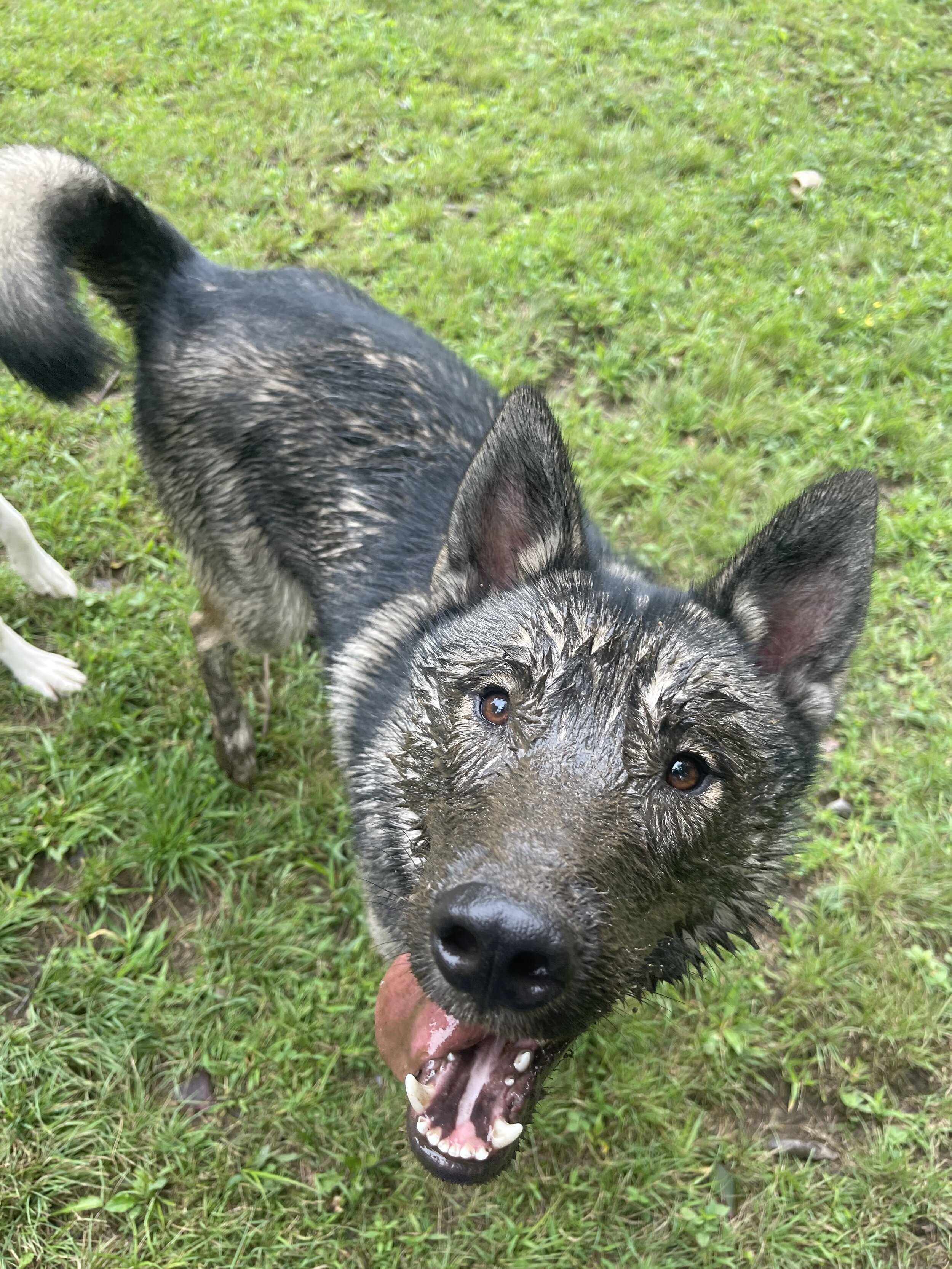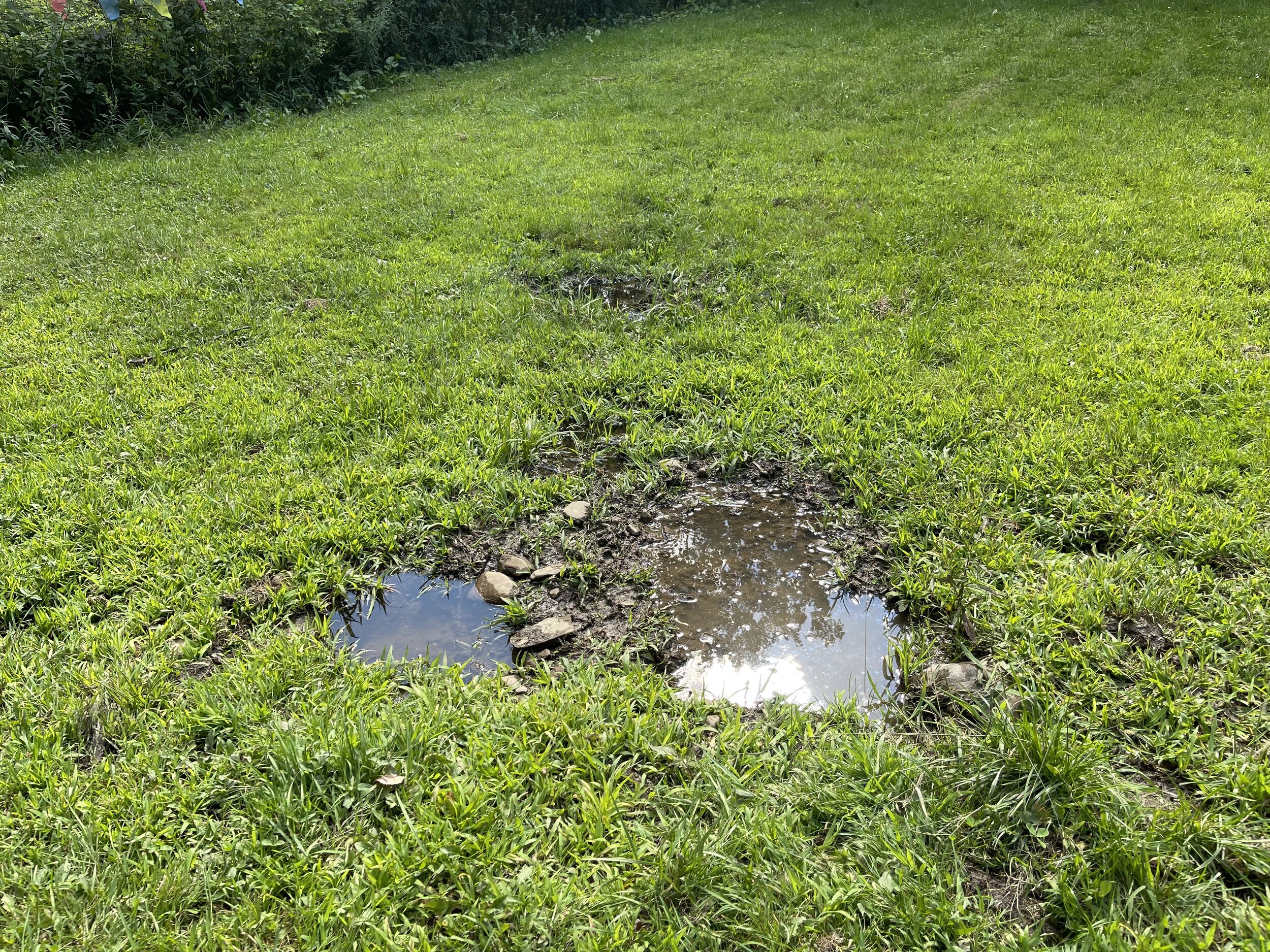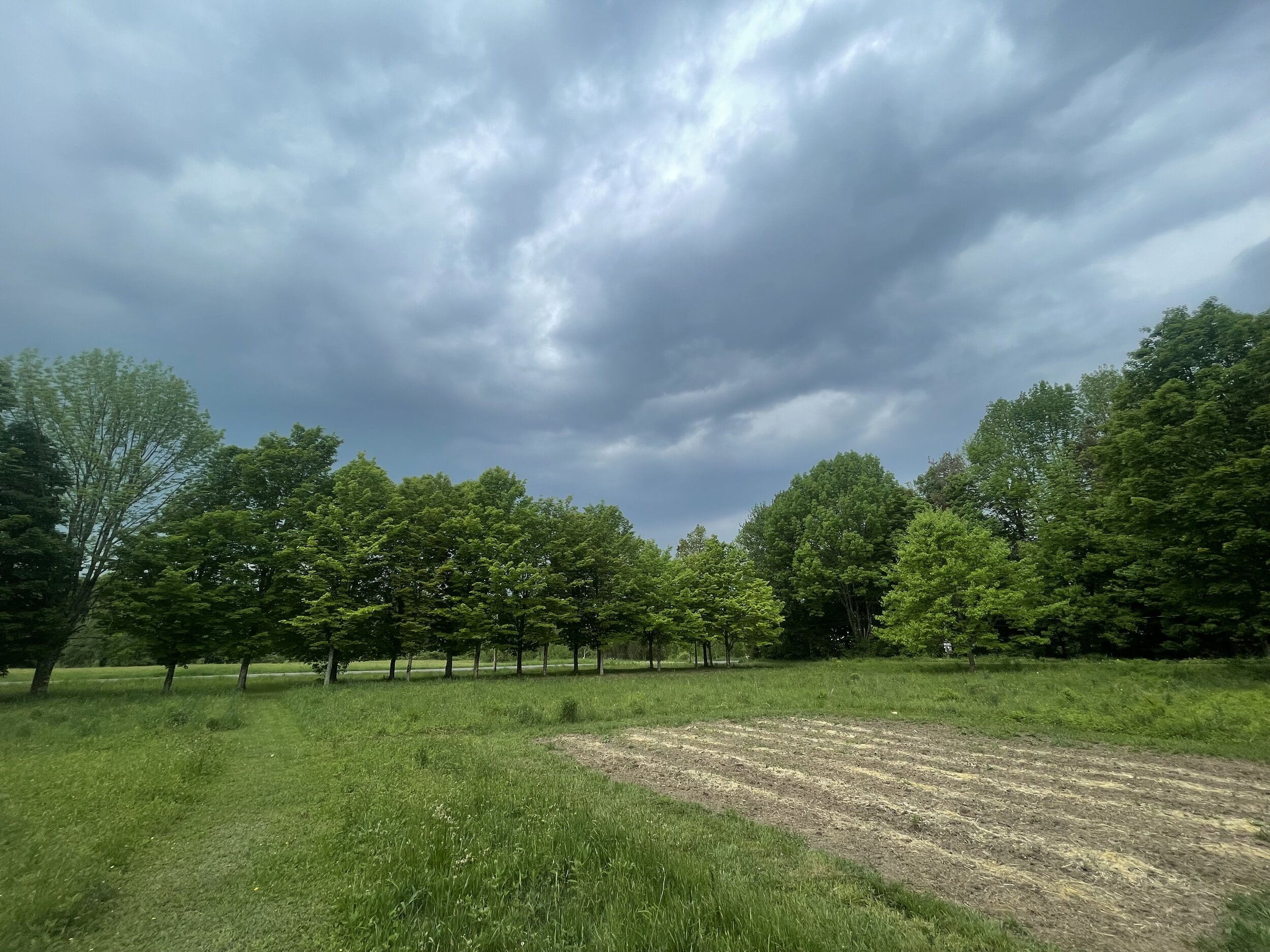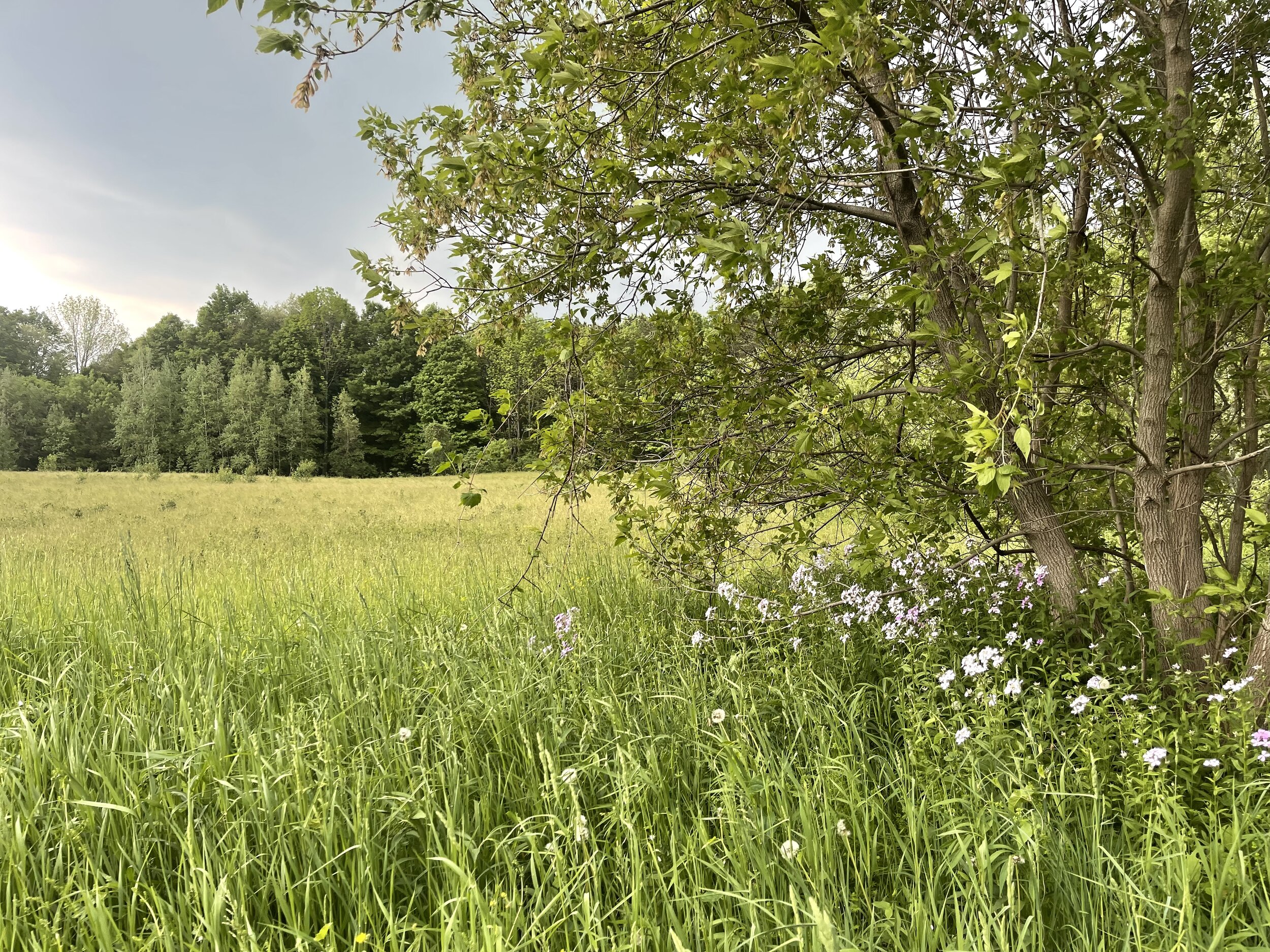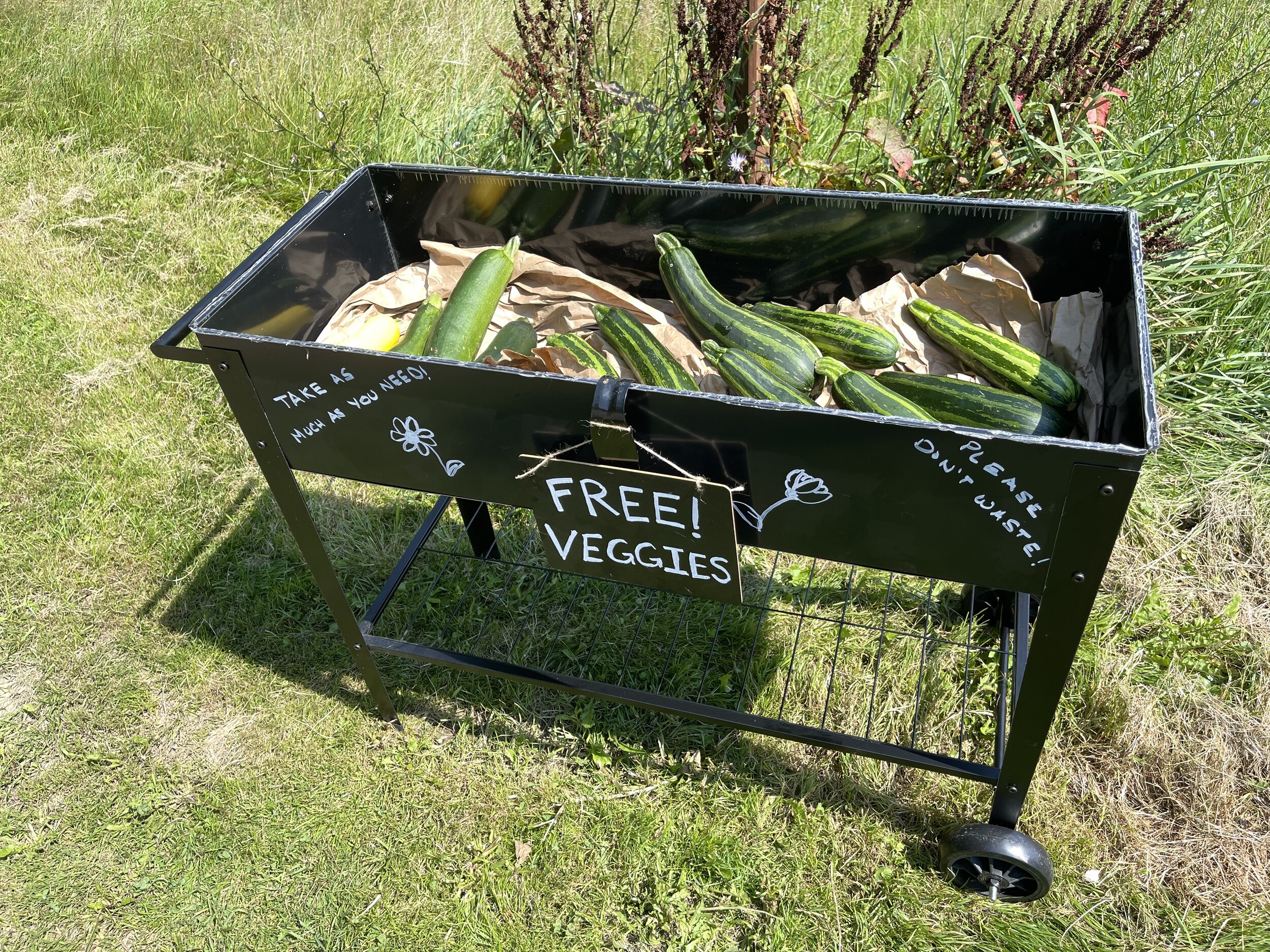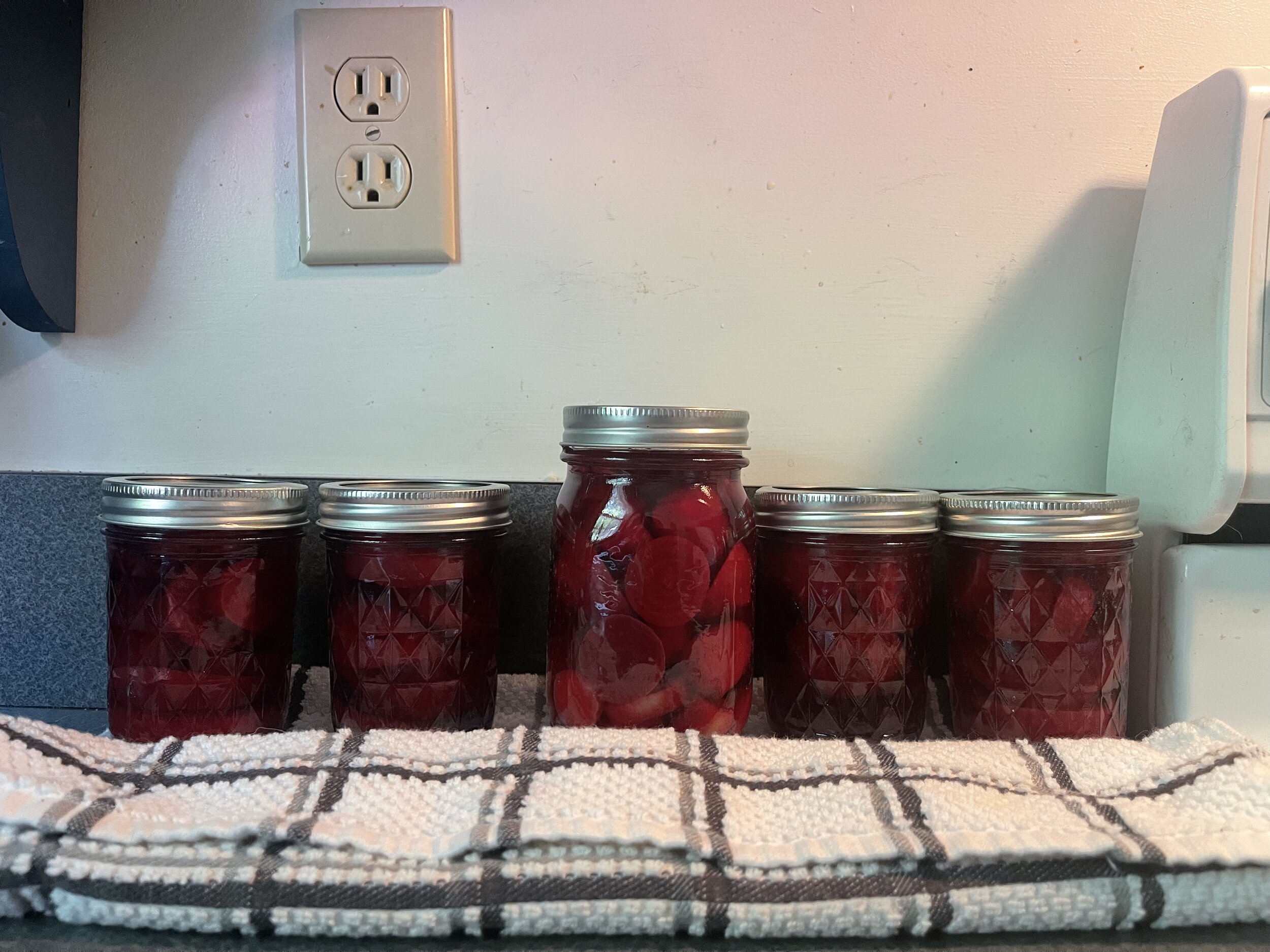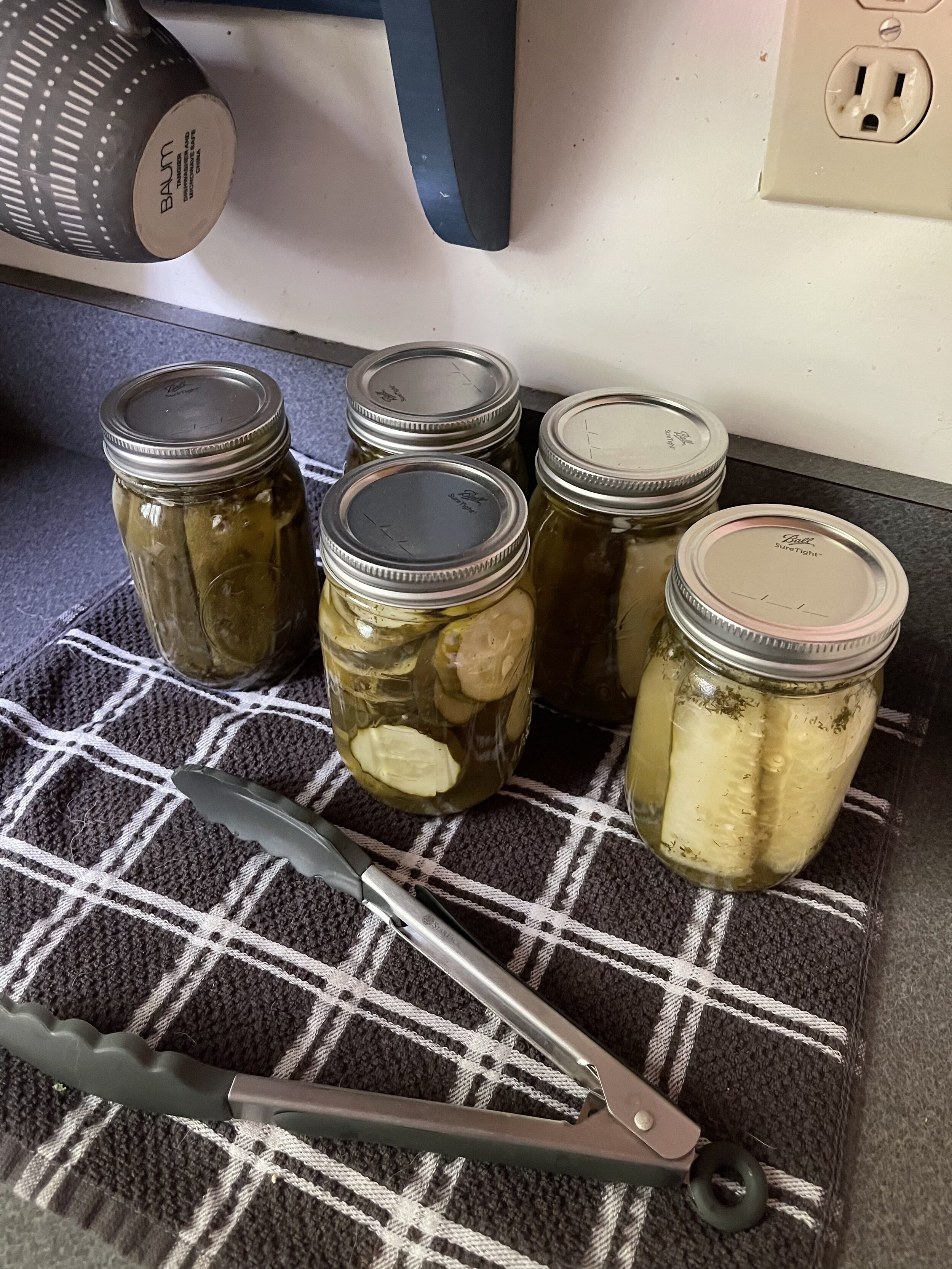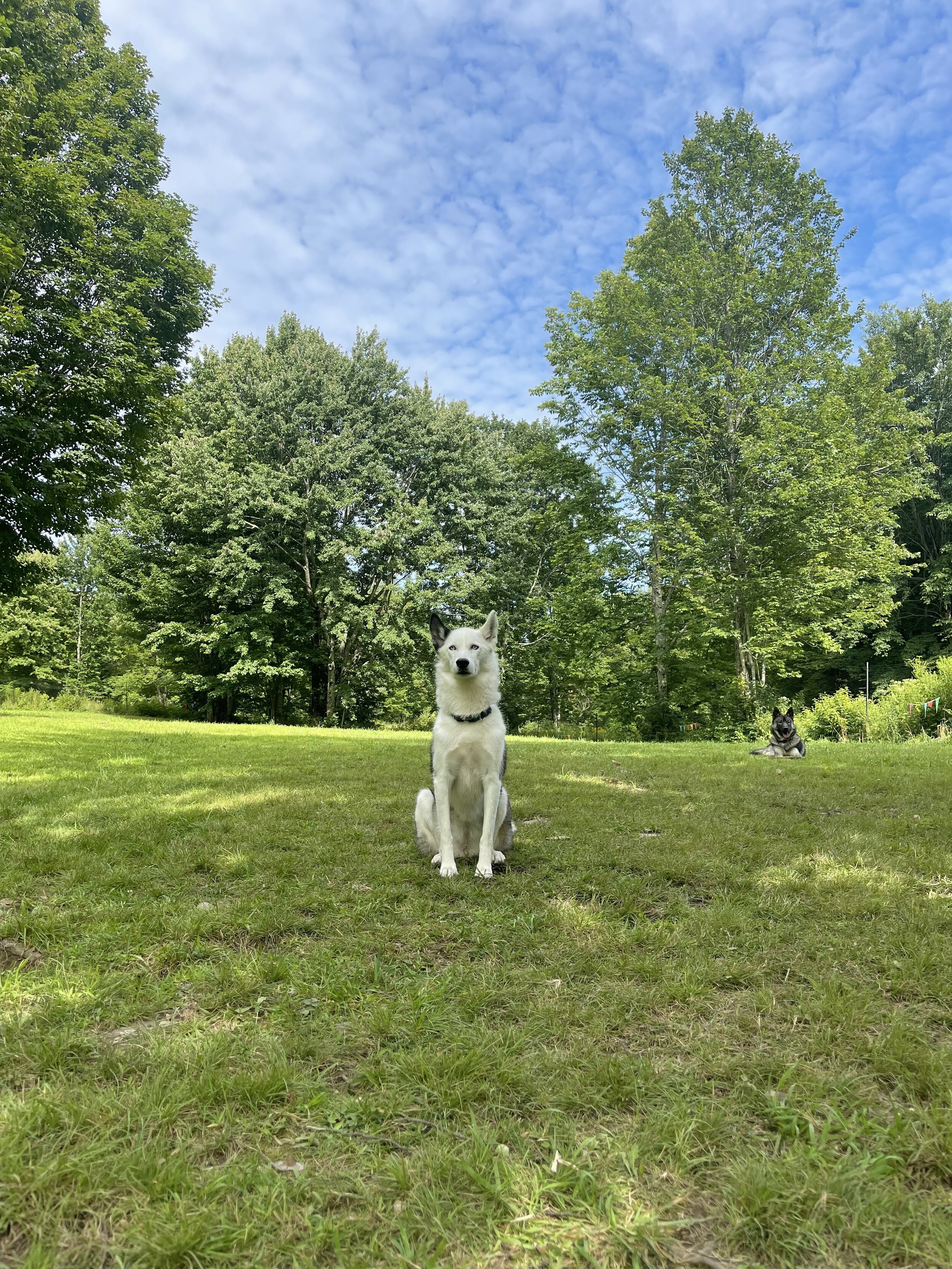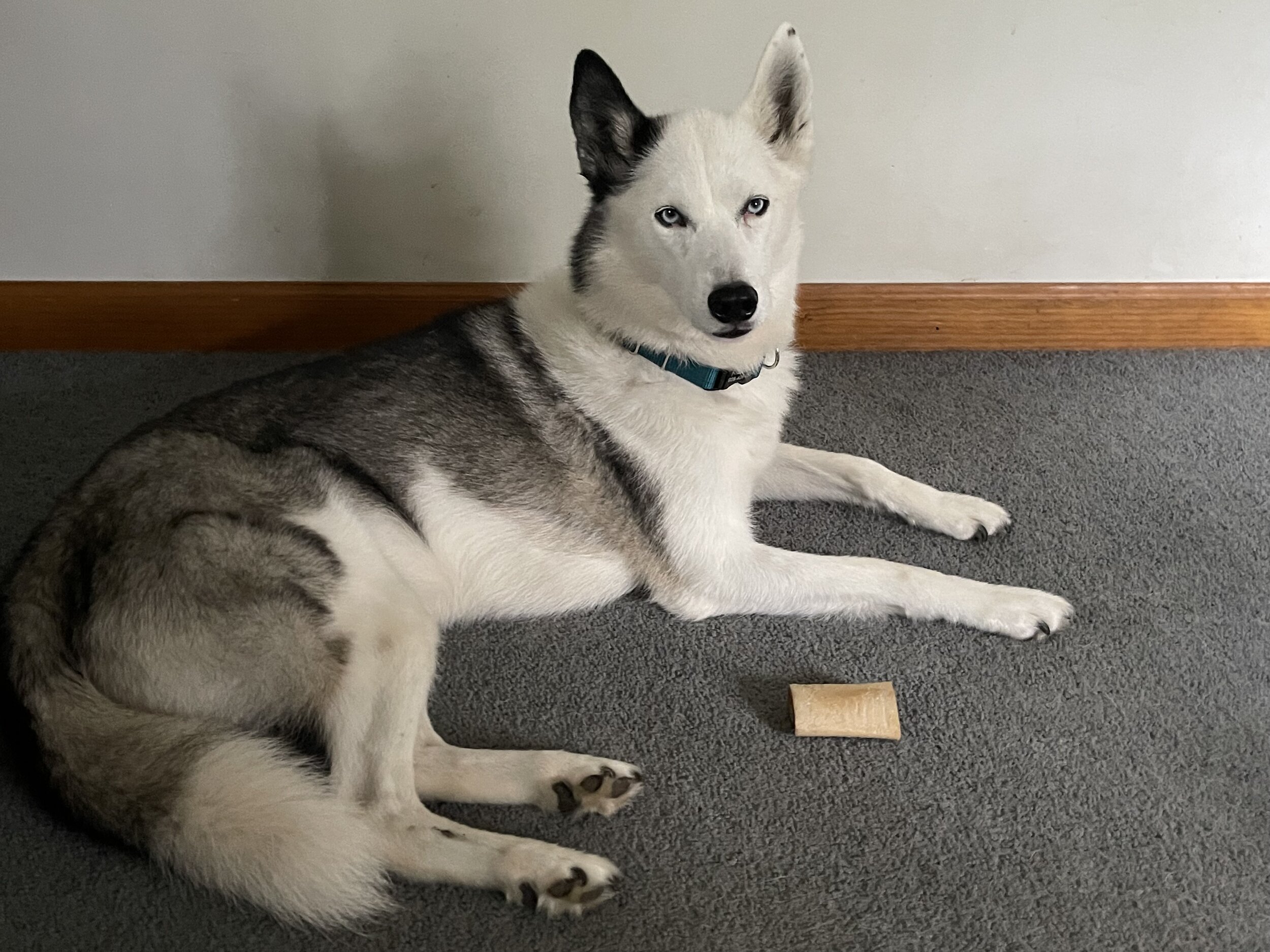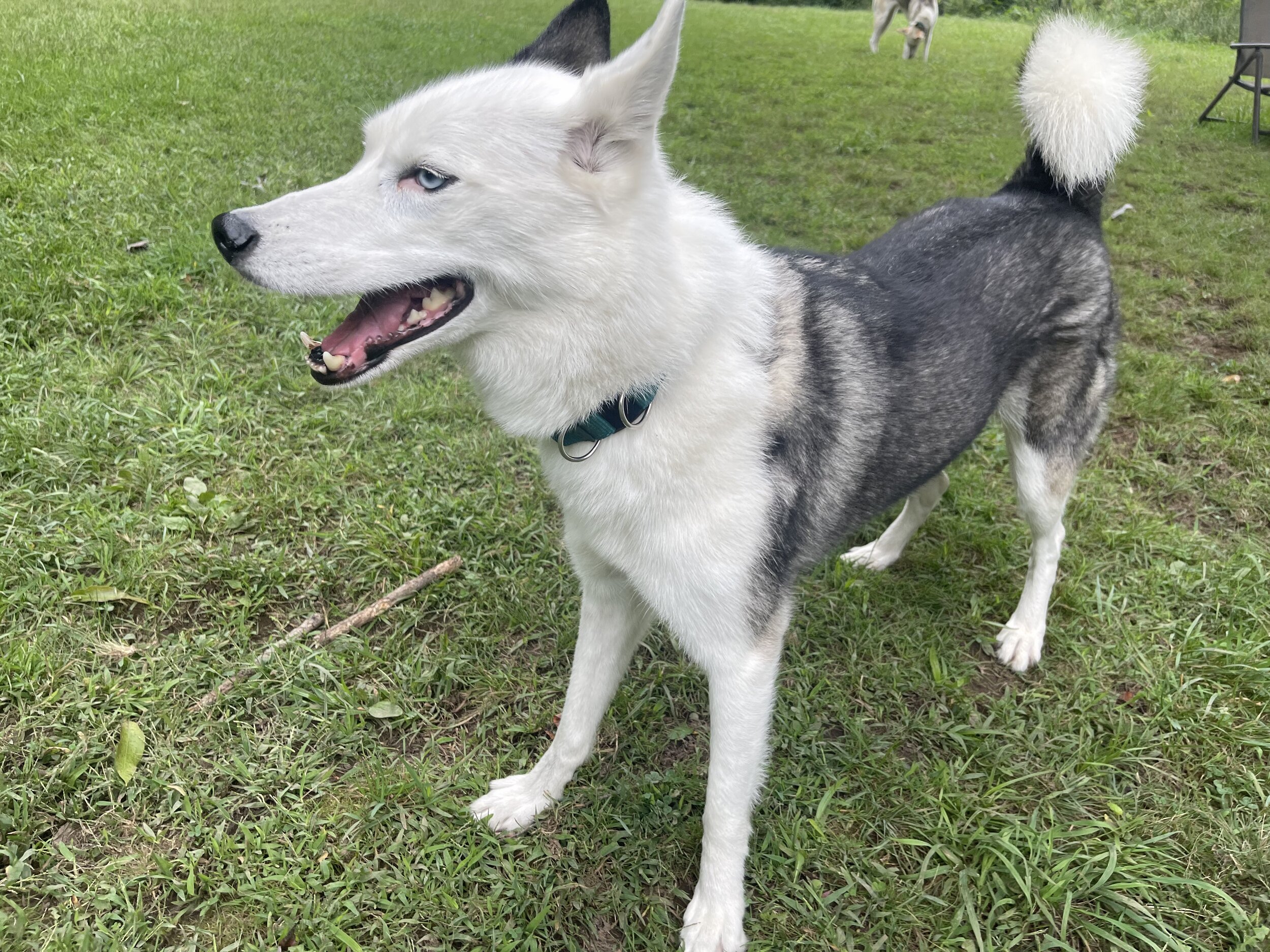One of the most frequently asked questions I get is, “How do you transport so many dogs!?” And in my years of mushing, I’ve tried just about every method and wasn’t super pleased with any of them. I decided it was time to upgrade the dog-hauler. Well, I decided this last year, but it took exactly that long to come to fruition.
When I only had a small team, a regular SUV did the trick. I briefly tried a camper van conversion, but the van itself was old and unreliable. My next choice was the Ford Transit Connect—a little van with a big amount of space inside. I crammed eight crates into it and for a long time, it was ideal. I liked having the dogs inside with me while we made long trips (across the country and back!) and I could carry my Arctis cart on the hitch or my sled on the roof rack.
Then I moved to the north country, where AWD or 4WD is somewhat a necessity in the winter months. The team also grew and suddenly I had gear to tow. My little FTC wasn’t cut out for all this, so I (very quickly) purchased an F-150 and stuck a used wooden dog box on the back of it. In the United States, this is the standard method of dog transport for larger teams. I felt like a “real” musher, finally!
Except, if I’m honest, I didn’t love it. I felt disconnected from the dogs when we made long trips. The dogs themselves were apprehensive. Most of them never learned to jump out of the boxes into my arms—or onto ramps or step stools. I don’t blame them—pick-up trucks are freakin’ HUGE these days and with the box up on the bed rails, it was a heck of a leap. So, I solved the problem (and saved myself some backaches) by hauling around above-ground pool steps everywhere we went. Silly, yea, but it worked.
So I had the FTC for warm weather trips and the truck for mushing season travel. It worked OK, for a time, but then the dog box started to rot. Atlas also refused to be boxed. I had seven usable boxes, which left three dogs riding in the cab with me. At one point, Sagan pulled the wire grating off her box’s window and stuck her head out (thankfully while we were parked in my driveway). A lot of winter races would require the dogs to sleep unattended in parking lots. I didn’t trust my setup and it held me back from making trips to snow races last season.
After considering all my options, I took a hint from Euro mushers and started searching for full-sized, AWD vans. Spoiler alert, there aren’t many on the market. America is full of truck nuts, literally and figuratively. COVID also lead to global supply chain shortages, yada yada yada, and it was apparently cheaper to order a custom model directly from Ford than to buy a used one that didn’t quite fit my requirements. Game plan: build myself the mother of all dog-haulers that had all the things I liked about my FTC with the capabilities of the F-150.
A year later, the dealership who routed my order to Ford told me, “better luck next year” and I said fuck that. A van that nearly fit my specs, for roughly what I was expecting to pay, hit the market in Ohio. I sprung on it. It was finally happening.
Once the Megavan arrived, I yoinked out the second row seats (with some local help) and put down sound-dampening insulation. The ten Ruff Land crates that had been sitting in my barn finally found their permanent home, leaving plenty of space for gear and for a human to snooze. While it sat in my driveway awaiting registration paperwork, I found window covers, a bluetooth temperature gauge, all sorts of magnetic hooks, crate fans, and other little conveniences to make the van our home away from home.
I’m sure there will be more optimizations to come (I’m already thinking about a rear AC unit and a ladder) but for now, the Megavan is ready to roll. We took our first journey down to New Jersey earlier this month and I’m pretty damn pleased with my decision.
